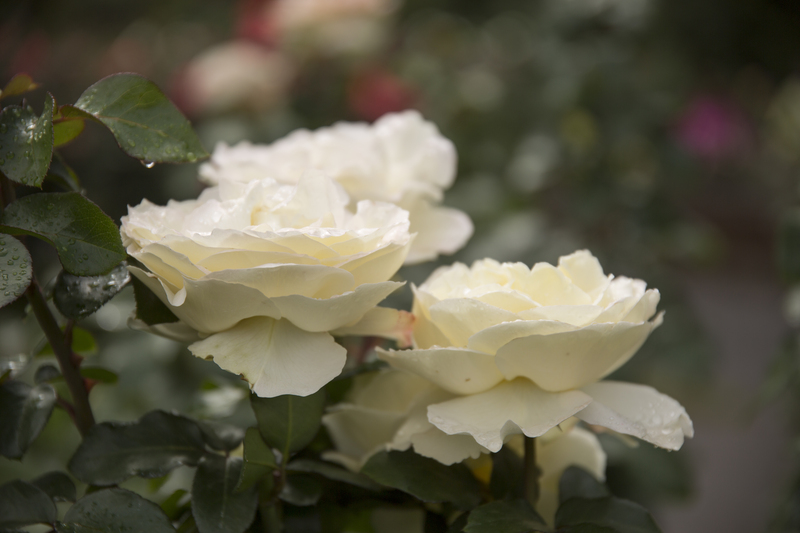Strategies for Keeping Garden Flora Safe in Winter
The beauty and vitality of a garden can fade quickly under the harshness of winter's cold, frost, and wind. As temperatures drop, ensuring the safety and longevity of your precious plants requires thoughtful preparation and consistent care. This comprehensive guide explores the best strategies for protecting garden flora in winter, arming you with expert gardening tips to preserve the health and splendor of your outdoor haven.
Understanding the Impact of Winter on Garden Flora
Winter can be one of the toughest seasons for garden plants. Low temperatures, icy winds, frost, and fluctuating weather conditions are significant threats, often leading to plant dehydration, tissue damage, or even death. By comprehending how winter affects different plant types, gardeners can better protect their green spaces using targeted, effective winter flora protection strategies.
- Deciduous plants shed leaves to minimize moisture loss but can face root damage in deep freezes.
- Evergreen plants suffer dehydration as water in the ground freezes, making it hard for their roots to absorb moisture.
- Perennials may die back above the ground but require protection so roots and crowns are not killed by frost.
- Bulbs and tubers can rot in wet conditions or freeze if too close to the surface.

Proactive Steps for Winter Garden Plant Protection
1. Choose Hardy, Winter-Resistant Plants
Plant selection is the first line of defense. Go for varieties well-suited to your climate zone, as these tend to withstand local winter extremes. Consult local nurseries or gardening resources for advice on winter-hardy plants and shrubs for cold climates. Opt for native species, since they have evolved to thrive in your local environment.
2. Prepare Your Soil for the Cold
Healthy, well-prepared soil acts as insulation for roots, locking in warmth and moisture. Before the first frost, take the time to:
- Incorporate organic matter, such as compost or well-rotted manure.
- Ensure proper drainage by loosening heavy clay soils to prevent root rot from excess winter moisture.
- Test soil pH and correct imbalances for optimal plant cold resistance.
Well-aerated soil is less likely to freeze solid, and healthier roots resist winter stresses.
3. Mulch for Insulation and Moisture Control
Applying a generous layer of organic mulch is critical for keeping garden plants safe in winter. Mulch acts like a blanket, moderating soil temperature and sealing in moisture. The ideal mulch application involves:
- Spreading 5-10 cm (2-4 inches) of mulch over plant root zones after the ground freezes but before severe cold arrives.
- Using materials such as shredded leaves, straw, wood chips, or pine needles.
- Avoiding mulch in direct contact with stems or trunks, which can promote rot.
Mulching also helps prevent soil erosion and the heaving of perennials caused by freeze-thaw cycles.
4. Water Wisely Before Winter Sets In
Before water turns to ice, make sure your garden plants are adequately hydrated. Well-watered plants are more resilient to cold snaps and dehydration caused by frozen ground. Take special care with evergreens and young plants, as these are most susceptible to winter drought.
Tips include:
- Deeply water garden beds in late autumn, especially during dry spells.
- Cease watering once the ground starts to freeze, as excess water can lead to root rot.
Physical Barriers: Shielding Plants from Winter's Fury
5. Use Row Covers, Cloches, and Tunnels
Physical plant covers, such as frost cloths, garden fleece, or even upturned pots (cloches), create a protective microclimate by trapping heat and shielding from wind. Row covers and tunnels made with hoops and heavy-duty fabric are invaluable for winter plant safety, particularly for vegetables and tender ornamentals.
- Secure covers well to withstand winter winds.
- Ventilate occasionally to prevent mold growth during sunny spells.
6. Build Windbreaks and Shields
Wind can rapidly desiccate and damage plants, particularly evergreens. Constructing a windbreak or screen is an effective winter weather garden flora strategy. Consider:
- Temporary structures using stakes and burlap around vulnerable shrubs.
- Planting a permanent barrier of hedges or hardy trees on the windward side of your garden.
- Grouping pots and containers together in protected spots for mutual support and warmth.
7. Wrap and Protect Individual Plants
Delicate trees and shrubs (like young fruit trees or roses) might need extra protection:
- Wrap trunks with tree wrap or burlap to prevent frost cracks and sunscald.
- Insulate the base with additional mulch, straw, or leaf piles.
- Use garden netting or chicken wire to prevent animal damage and hold winter covers in place.
Special Care for Container Plants in Winter
8. Move Pots to Sheltered Spots
Plants grown in containers are more vulnerable since potting soil freezes and thaws faster than ground soil. Keeping potted flora safe in winter involves:
- Moving pots against south-facing walls or under overhangs.
- Grouping containers together for added insulation.
- Elevating pots off the ground with bricks to prevent root freezing and ensure drainage.
9. Insulate Containers
Wrap containers with bubble wrap, burlap, or insulation fabric. For further protection, sink pots into the ground or bury them in mulch piles for the duration of winter. Use thick terracotta pots with caution, as they are prone to cracking in freezing temperatures.
Advanced Garden Flora Winter Protection Tips
10. Prune Wisely for Health and Safety
Prune only as necessary--removing dead, diseased, or crossing branches after the plant goes dormant but before heavy snow. This helps prevent breakage from snow and ice accumulation and allows plants to direct their energy towards surviving the winter.
11. Avoid Fertilizing Late in the Season
Fertilizing encourages new, tender growth that is easily killed by frost. Complete any feeding by midsummer, focusing on slow-release, balanced fertilizers.
12. Prevent Pests and Disease
Winter is not just about the cold: rodents, deer, and insects may target dormant plants. To guard against these pests:
- Wrap tree bases with wire mesh to deter rodents.
- Apply dormant oil sprays to smother overwintering insect eggs.
- Keep garden beds clean of debris, fallen fruit, and foliage that harbors disease.
Monitoring and Adjusting During Winter
13. Regularly Check on Your Plants
Don't neglect your garden once winter arrives! Frequent monitoring lets you address issues such as:
- Damaged plant covers or exposed roots.
- Watering container plants during sunny, dry spells.
- Pruning away broken branches after ice storms.
- Reapplying mulch blown away by wind.
14. Adapt to Changing Winter Conditions
Modern winters are less predictable. Winter weather can fluctuate from freezing to unseasonably warm. Be ready to add, remove, or adjust your plant covers, mulch, or windbreaks based on changing forecasts. Flexibility is key to effective garden flora winter care.
Planning Ahead: Long-Term Winter Flora Safety Strategies
15. Design with Winter in Mind
Whenever possible, design your landscape to buffer winds, maximize sunlight exposure, and provide natural protection for sensitive plants. Leave room for temporary winter protection structures in key spots and include evergreen windbreaks in your long-term planting strategy.
16. Record and Review Your Winter Care Routine
Gardening is a learning process. Keep a log of what winter strategies work best for each type of plant and weather condition. Note any casualties and successes to inform your approach in future winters.
Common Mistakes to Avoid When Protecting Garden Flora in Winter
- Applying mulch too early, which may encourage rodents or fungal growth.
- Allowing covers to touch foliage, causing frost damage through direct contact.
- Forgetting to remove snow from heavy evergreen branches, leading to breakage.
- Watering plants during hard freezes, increasing risk of ice damage.
- Overinsulating containers, causing root rot rather than protection.

Frequently Asked Questions on Winter Garden Flora Protection
When should I start preparing my garden for winter?
Start your winter preparation once daily lows consistently approach freezing, commonly in late autumn. Timely action ensures plants acclimatize naturally and receive proper protection before hard freezes hit.
How do I know which plants need the most winter protection?
Tender perennials, young trees, container plants, and species outside their recommended growing zones require the most attention. Consult plant tags or local experts to identify vulnerable flora.
Is it necessary to cover all plants in my garden?
No. Focus on at-risk plants or those with known susceptibility to winter injury. Hardy natives often thrive without extra protection, barring extreme conditions.
Can I use plastic sheeting to protect my plants?
Plastic is not recommended for direct contact since it traps moisture and can lead to mold or freeze damage. If using plastic, ensure it is supported above the plant as a makeshift cold frame or temporary greenhouse.
Conclusion: A Healthier Garden Awaits Every Spring
Winter need not spell disaster for your cherished plants. By following proven strategies for keeping garden flora safe in winter, you'll not only safeguard the beauty and diversity of your garden, but also foster stronger, more resilient growth when spring finally arrives. Prepare, protect, and monitor--these are the keys to winter-proofing your garden successfully every year.
- Choose the right plants for your climate
- Enhance soil and mulch effectively
- Use physical barriers and windbreaks
- Shield sensitive container flora
- Remain vigilant and adaptable all winter long
With a little planning and the proper techniques, your garden flora can emerge from winter not just surviving, but thriving!